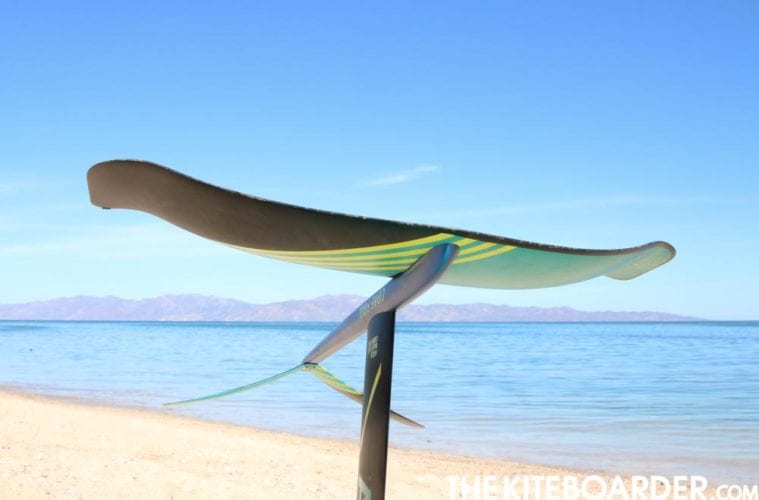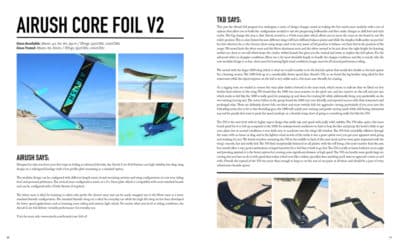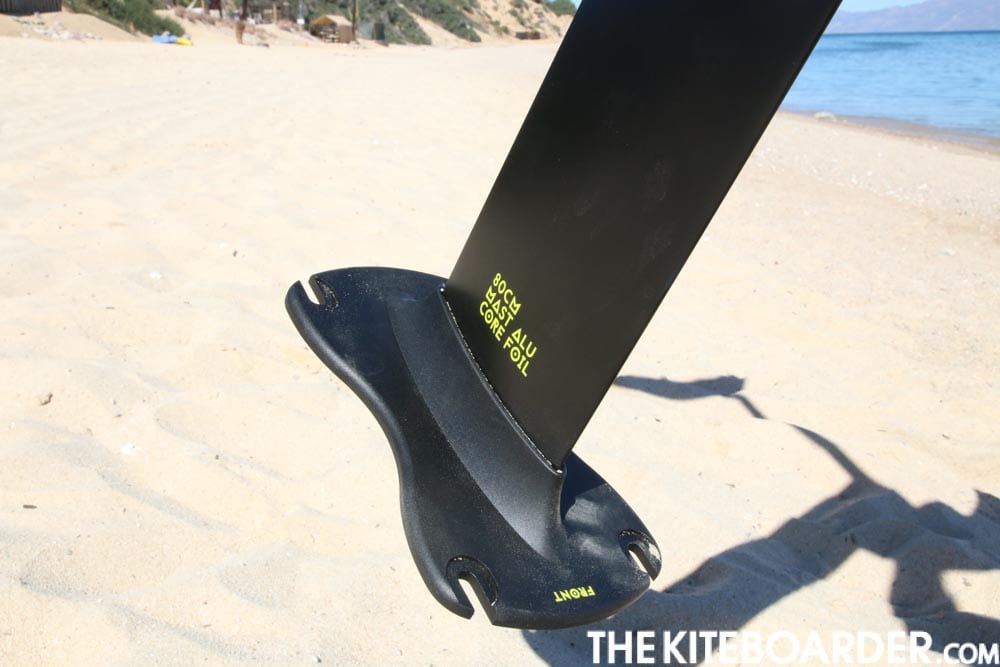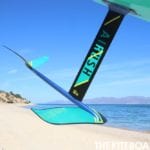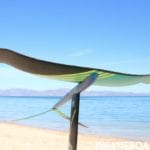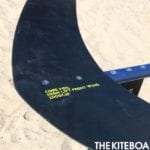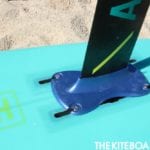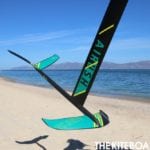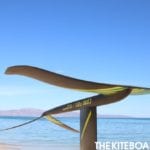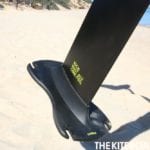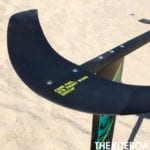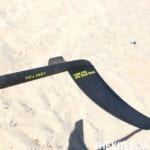Sizes Available: 40, 60, 80, 95cm Masts and 550CM2, 1000CM2 Wings
Sizes Tested: 60, 80cm Masts and 550CM2, 1000CM2Wings
Airush Says:
Designed to take you from your first steps in foiling to advanced freeride, the Airush Core Foil features our high stability, low drag wing design on a redesigned fuselage with a low profile plate mounting as a standard option.
The modular design can be configured with different length masts, board mounting systems and wing configurations to suit your riding level and personal preference. The vertical mast configuration mates to a 9 x 16cm plate which is compatible with most standard boards and can be configured with a Tuttle System if required.
The 60cm mast is ideal for learning or riders who prefer the shorter mast and can be easily swapped out to the 80cm mast as a more standard freeride configuration. The standard freeride wing set is ideal for everyday use while the high lift wing set has been developed for lower speed applications such as learning, wave riding and extreme light winds. No matter what your level or riding conditions, the Airush Core foil delivers versatile performance for everyday use.
Visit for more info: www.airush.com/boards/core-foil-v2
Tkb Says:
This year the Airush foil program has undergone a series of design changes aimed at making the line much more modular with a ton of options that allow you to build the configuration needed to suit the progressing foilboarder and then make changes as skill level and style evolve. The big change this year is that Airush moved to a 4-boltmast plate which allows you to move the mast on the board to suit the rider’s position. This is a key feature because different wings will have different balance points and while the strapless foilboarder can put his/her feet wherever he or she chooses, those using straps need to be very aware of foil position to balance out their feet to the position of the straps. We tested both the 60cm mast and the 80cm aluminum mast and the 60cm seemed to be just about the right height for learning, neither too short or too tall which keeps the crashes within bounds but gives you the vertical real estate to explore the foil-sphere. For the advanced riders in choppier conditions, 80cm was a far more desirable length to handle the choppy conditions and this is exactly why the new modular design is so key: short mast for learning/light wind conditions, longer mast for all around performance riding.
We started with the larger 1000 wing which is what we would consider to be the freeride option that would also double as the best option for a learning session. The 1000 foils up at a considerably slower speed than Airush’s 550, so we found the big brother wing ideal for first waterstarts while the input/response on the foil is very stable and is a bit more user-friendly for cruising.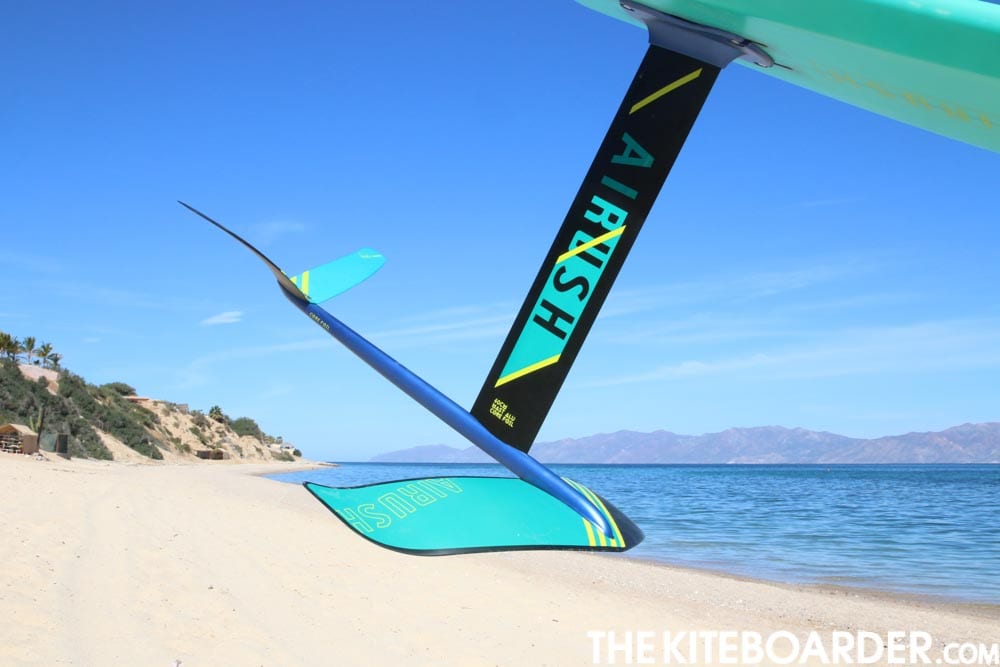
As a rigging note, we tended to mount this mast plate farther forward in the mast track, which seems to indicate that we liked our feet farther back relative to the wing. We found that the 1000 was most reactive on the pitch axis, and less reactive on the roll and yaw axis which made us feel like the 1000 is really good for pumping up and down for creating lift while additionally being very predictable on the two turning/carving axis. The novice foilers in the group found the 1000 very user-friendly and reported success with their waterstarts and prolonged rides. There are definitely slower foils out there and more twitchy foils for aggressive carving, particularly if you cross into the foilsurfing niche, but as far as kite freeriding goes, the 1000 will satisfy your cruising and gentle carving needs while still having substantial top-end for people that want to push the speed envelope on a freeride wing, short of going to something really fast like the 550.
The 550 is the next level with its higher aspect design that yields top-end speed with really solid stability. The 550 takes quite a bit more board speed for it to foil up compared to the 1000. In underpowered conditions we had to loop the kite and pump the board a little to get onto plane, but in normal conditions it was fairly easy to accelerate into the wing’s lift window.
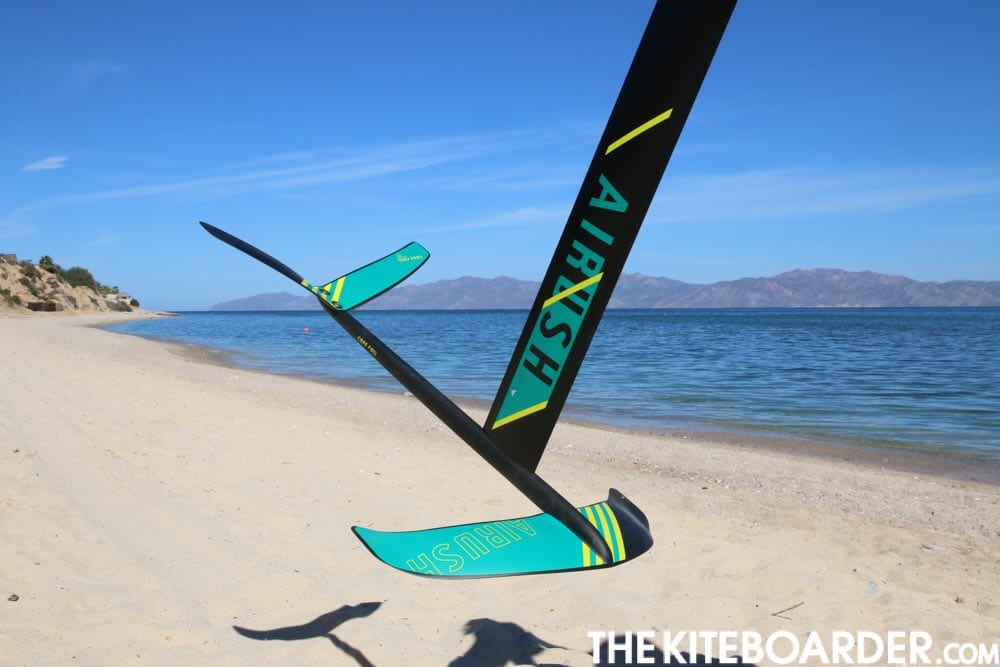
The 550 feels incredibly efficient through the water with no hums or drag and in the lightest wind session of the week; it was a great option once you got your apparent wind going and working for you. We found ourselves mounting the 550 in the middle to back of the mast track and we were quite impressed with the wing’s smooth, fast and stable feel. The 550 feels exceptionally balanced on all pitches with the roll being a bit more reactive than the yaw, but overall offers a very good combination of input/reactivity for a foil that is built to go fast. The 550 is really at home locked in at an angle and jamming upwind; it is the better option for covering some significant distance at high speed. The 550 can handle some gentle large arc carving, but you have to do it with speed that makes it feel more like a slalom specialist than anything you’d want to approach a wave or surf with. Overall, the top end of the 550 was more than enough to keep us on the seat of our pants at all times and should be a part of every adventurous freeride quiver.
Want more gear reviews all in one place? Read detailed and objective reviews on the 30 kite models and 33 board models that Tkb and freeride testers reviewed for the 2018 Freeride Gear Review Guide.


